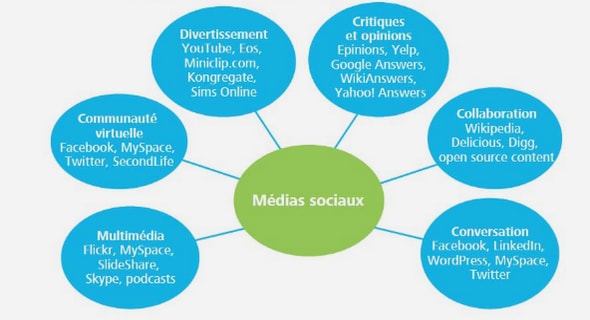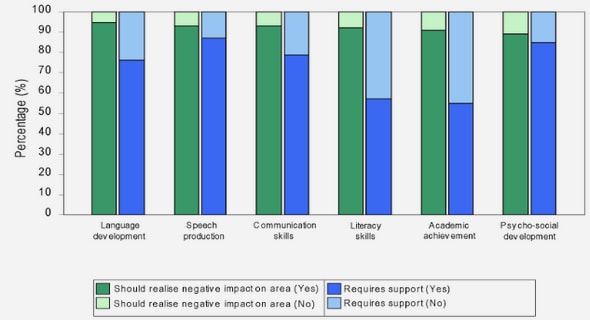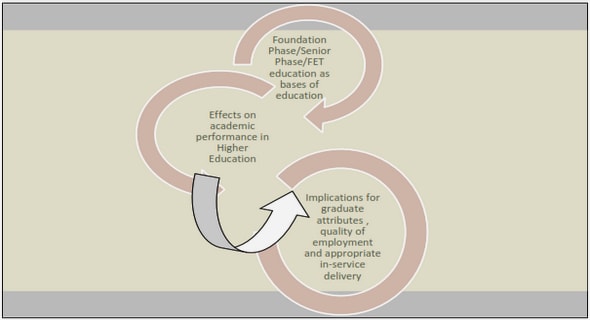Get Complete Project Material File(s) Now! »
CHAPTER 3 THE PRIVATE HIGHER EDUCATION ENVIRONMENT IN BOTSWANA AND IMPLICATIONS FOR KNOWLEDGE MANAGEMENT
Introduction
In the previous chapter, material on the conceptual framework of this study was presented. In that chapter, we reviewed relevant literature on the concepts of KM and the related models as well. As a follow-on to chapter two, this chapter seeks to provide the context of PHE in Botswana focusing on the institutional regulatory framework under which PHE institutions are operating and its implications on KM practices.
The chapter describes the highly regulated PHE environment, which necessitates the need for effective KM practices. In order to give the reader a clearer perspective on the development of the PHE sector in Botswana, the chapter starts with an overview of the PHE environment in Botswana. As part of the context of the PHE environment, Chapter 3 also discusses the challenges facing PHE institutions in Botswana that can be addressed through KM solutions. It is important to note that all the five PHE institutions covered in this study are family-owned and owner-managed. This chapter thus provides evidence of family ownership and management (as part of the contextual framework of PHE institutions) and its implications on KM.
The PHE environment in Botswana
According to Kotecha, Wilson-Strydom, and Fongwa (2012), there has been a sharp increase in demand for higher education (HE) in Botswana from 2007. It is against this background that Botswana attempted to expand HE by encouraging investment in the PHE sector. The call for private participation in the PHE sector led to a dramatic rise of private colleges and universities. These institutions include Baisago University College, Limkokwing University of Creative Technology, Botho University, Gaborone Institute of Professional Studies (GIPS), ABM University College, and others. These PHE institutions constitute the sample of this study.
According to the Tertiary Education Council (2013), while these institutions are not directly funded by the government, they receive specified quotas of government-sponsored students based on their capacity and infrastructure. The reason why PHE institutions receive government-sponsored students is that the government wants these institutions to complement the efforts of public tertiary institutions in providing HE to Batswana. This is due to the realisation that public institutions could not cope with the teaming number of potential university students in the country (Tertiary Education Council, 2013). Table 3.1 shows the overview of the HE sector in Botswana and the contribution of PHE institutions.
Phase 1 (up to 2001)
This phase was when government sponsored most of the students to study at the University of Botswana (UB) and other public tertiary education institutions such as Botswana College of Agriculture (BCA), health institutions, and colleges of education. A small number of students were sent to study abroad each year (Mokgwathi, 1992), mostly in South Africa, the United Kingdom (UK), and Malaysia, particularly in disciplines such as engineering, medicine, and hard sciences that were not common at the UB (Mabizela, 2007).
Phase 2 (from 2001 to 2007)
This phase saw the Botswana government extending student sponsorship to local PHE institutions registered with the TEC after the realisation that public institutions alone were failing to meet the demand for HE. Extension of government sponsorship to students in PHE institutions led to a proliferation of such institutions in Botswana (Thobega, 2010) as it became lucrative business to own a college/university (Makgosa & Molefhi, 2012). However, there was suspicion on the part of key stakeholders that, if left alone, these institutions could maximise profit at the expense of quality education. This mistrust led to the Botswana government establishing the TEC to play accreditation, regulatory, supervisory and policing roles (Thobega, 2010), primarily focusing on PHE institutions. This regulatory intervention was considered necessary to ensure that these institutions adhered to expected quality and standards.
The mistrust between the TEC and PHE institutions covered in this study can be addressed through KM solutions. Collaboration with internal stakeholders (such as staff and students) whereby people work in groups (communities of practice – CoPs) is a critical KM enabler. Such collaboration provides an effective KM solution as it enables collaborators to assist each other accomplish seemingly difficult job responsibilities (Rayton & Yalabik, 2014; Saenz & Perez-Bouvier, 2014). External collaboration instead of competition is also critical for PHE institutions as it enables staff members of different institutions to share vital information, and insights, and collectively participate in problem-solving (Khalifa & Liu, 2010; Jang & Koi, 2014).
The importance of collaboration as a KM enabler is further highlighted by Growth and Bowers (2010), who contend that collaboration enables organisations to benefit from comments and criticism from colleagues. Private higher education institutions may benefit immensely from collaboration if they are open to ideas from stakeholders since they can access information and knowledge reservoirs possessed by these stakeholders. Such stakeholders include regulatory authorities, government officials, industry experts, students and senior academic staff. Lack of collaboration between PHE institutions and the outside bodies mean that there is little knowledge flowing into these organisations from external knowledge reservoirs. Collaboration between PHE institutions and the TEC, the BOTA, and government means that these institutions will be well-versed with the needs and expectations of these stakeholders which will make it easy for the institutions to meet those expectations.
Between 2007 and 2010, the government was responsible for determining how many government-sponsored students each PHE institution received. However from 2012, the Botswana government decided how many students would be sponsored in PHE institutions and then left the choice of institution to the students (Tertiary Education Council, 2013). This policy shift meant that PHE institutions were more challenged than before to operate as attractive business more competitive than others. Institutions that are more competitive than others are able to attract higher numbers of better quality students. The need for competitiveness makes it imperative for top management to put in place a KM environment with effective KM practices. The general understanding was that such an environment may make an institution capable of managing its knowledge assets better than its competitors so as to become more competitive. Table 3.2 shows the scenario of distribution of students to selected PHE institutions after the policy shift.
Table 3.2 shows that two institutions namely Botho University and Limkokwing University of Creative Technology (LUCT) experienced sharp increases in student enrolment numbers when the government allowed students to choose institutions they preferred instead of applying the quota system. Such increased enrolment for LUCT and Botho University may have been caused by better infrastructure such as classroom space, internet, and computers. Better infrastructure creates an impression of higher quality teaching and learning hence more effective knowledge creation, dissemination, utilisation, and retention.
The regulatory framework
The second phase of the development of the HE sector that is described above saw the proliferation of PHE institutions in Botswana. According to the Tertiary Education Council (2013), some of these institutions became opportunistic as a result of a weak regulatory environment, coupled with the enormous demand for post-secondary education. The problem culminated in poor quality programmes offerings at exorbitant cost to the student. This view is reinforced by Kotecha, Wilson-Strydom and Fongwa (2012) who concur that, repeatedly, from the students enrolled in these institutions as well as members of civil society was a plea for the TEC to completely overhaul the PHE component of the tertiary education system. The main challenge was that these key stakeholders had lost trust in PHE institutions and they believed that these institutions lacked the will to offer quality education without close supervision from the TEC.The continued pressure from the students and members of the civil society resulted in the TEC establishing a strict regulatory environment for the PHE institutions. From the perspective of students and other stakeholders, close supervision becomes critical given that, unlike public HE institutions, PHE institutions need to operate viable business models that position profit-making as the utmost priority. Some key stakeholders such as students, parents, government, and industry view PHE institutions as profit-maximising organisations, which can compromise academic quality if left unchecked (Tertiary Education Council, 2008). Mistrust between PHE institutions and students have often resulted in student strikes, class boycotts, court actions and solidarity meetings.
Due to the mistrust alluded to above, the PHE institutions covered in this study have been subjected to close public scrutiny by regulatory authorities over the past few years (Setume, 2013). As an example, the institutions are required to apply for permission to change a prescribed text, to change their teaching strategy, to change their assessment structure, and to modify a course outline and so on (Tertiary Education Council, 2010). Setume (2013) posits that such close scrutiny puts PHE institutions in a situation where, generally, they are required to outperform their public counterparts in order to gain acceptance by stakeholders. Such an environment makes KM enablers that facilitate KM practices in these institutions critical. These KM enablers have been explained in detail in Chapter 2 (section 2.2).
The lack of trust between PHE institutions and the regulatory authorities alluded to above can be addressed with KM solutions. Adoption of the right organisational culture that enables effective KM practices of knowledge creation, exchange and utilisation is a critical KM enabler (Kao, Wu, & Su, 2011; Kamhawi, 2012). That organisational culture should be one that facilitates interaction between academic staff of PHE institutions and the outside world so that the institutions benefit from experts outside their boundaries. An effective operating environment that fosters interaction and knowledge sharing would do much to build trust and diminish the role of regulatory authorities. Interaction between academic staff of PHE institutions and other HE institutions will provide academic staff of PHE institutions with the much needed exposure leading to knowledge flow from peers.
Effective interaction between staff of the selected PHE institutions and external stakeholders like other universities such as the UB, which are endowed with large amounts of quality resources, can benefit the PHE institutions. These institutions can achieve effective innovation by establishing relations and synergies with external organisations such as universities and research bodies. Such relations and synergies facilitate KM practices of knowledge generation, sharing and utilisation which will enhance the performance of PHE institutions. Enhanced performance will improve the public image of these institutions leading to the establishment of trust. Once trust is gained, the need for strict regulation will diminish.
Due to the need to closely monitor the activities of PHE institutions arising out of mistrust from key stakeholders, and in recognition of the role played by tertiary education in national development, the Botswana government passed the Tertiary Education Policy, Paper No 37 of 2008 (Tertiary Education Council, 2010). Noteworthy in this policy is the reference made to quality and the relevance of tertiary education as one of the critical factors in ensuring this transformational agenda.
As part of the close supervision of the operations of PHE institutions emanating from the lack of trust by key stakeholders, and in line with the tertiary education policy of 2008 alluded to above, the government introduced regulatory measures outlined below (Tertiary Education Council, 2010).
Quality assurance
According to the Tertiary Education Council (2010), the Tertiary Education Act of 1999 stated that the quality of HE could only be assured through a deliberate attempt of seeing to it that quality assurance procedures are in place in all tertiary institutions. Anderson, Johnson and Milligan (2000) argue that for government to obtain value for money, it is imperative to put in place quality assurance mechanisms to ensure high academic standards in learning institutions. In order to facilitate the process of quality assurance in HE institutions, the TEC developed the External Quality Assurance (EQA) and Internal Quality Assurance (IQA) frameworks. These frameworks encompass agreed standards and criteria to be used as touchstones to enable the evaluation of the effectiveness of institutional policies, processes, and practices to ensure quality HE in Botswana (Thobega, 2010). It should be noted that while in theory the TEC Act should also affect public tertiary institutions, in practice it targets only private tertiary institutions since public institutions have been left alone to do their work without interference (Setume, 2013; Samboma, 2017).
Quality concerns in PHE institutions arise from the general perception among stakeholders that PHE institutions, unlike public HE institutions that exist and are fully funded by government to provide education as a social service and not for profit, operate as purely profit-oriented organisations (Siphambe, 2012; Setume, 2013). Their primary objective is to generate revenue to satisfy shareholders and hence quality may be compromised in a bid to reduce cost and maximise profit. Due to fear of compromising quality in pursuit of maximum profit, only PHE institutions have thus become prime targets for strict regulation (Setume, 2013). This means that these institutions continually need to justify what they do, which makes the application of KM an invaluable necessity.
According to the Tertiary Education Council (2010), to dispel fears of quality compromise by PHE institutions, a rigorous quality assurance regime was put in place, which was essential to gain stakeholder confidence. The rigorous quality assurance regime is an all-embracing phenomenon referring to the on-going, continuous process of evaluating (that is, assessing, monitoring, guaranteeing, maintaining, and improving) the quality of PHE systems, institutions, or programmes. In pursuance of this quality agenda, the TEC established two audit portfolios for the effective monitoring and regulation of quality in PHE institutions, namely internal and external auditing as outlined below (Tertiary Education Council, 2010).
Internal auditing
This happens when an institution makes arrangements to do its own audit using its own staff members, peers or external auditors identified and appointed by the institution itself, but the audit adopts the TEC audit criteria. This is a self-evaluation exercise done in readiness for the external TEC audit. The internal audit criteria include assessing:
-
- Governance and management system of the institution
- Teaching, learning, and research
- Community engagement
- External auditing
- This is when the TEC arranges to come and assess the processes of an institution and determine whether it should be allowed to start offering HE or be allowed to continue if it was already doing so. The TEC therefore appoints a team of auditors with expertise in particular programme areas offered by an institution and the audit is organised around the following good practice principles (Tertiary Education Council, 2010):
- Effectiveness of the staffing of the institution
- Effectiveness of the process of programme design, implementation, management and review
- Effectiveness of the assessment systems and methodologies
- Provision of student support services
- Availability of the right physical infrastructure and other resources
- Existence of research infrastructure and innovation
- Availability of adequate financial resources
- Availability of evidence of the institutional staff’s community engagement
- After auditing the institution according to the above criteria, the audit team has to arrive at an independent judgment on the institution’s internal quality arrangements. Based on that assessment and findings, the TEC will prepare a report for the institution outlining areas of strength and good practice and those that require improvement. Commendations and recommendations will also be provided to guide the institution on its quality improvement programme. The TEC will continue to carry out quality assessments at regular intervals.
LIST OF FIGURES
CHAPTER 1 INTRODUCTION AND BACKGROUND TO THE STUDY
1.1 Introduction
1.2. A highly regulated environment (contextual setting)
1.3 Research problem
1.4 Justification for the study
1.5 Significance of the study
1.6 Definition of key terms
1.7 Literature review
1.8. Research methodology1.9 Data analysis, discussion and interpretation
1.9 Data analysis, discussion and interpretation
1.10 Research ethics, validity and reliability of the study
1.11 Scope/delimitation of the study
1.12 Structure of the thesis
1.13 Chapter summary
CHAPTER 2 PERSPECTIVES ON KNOWLEDGE MANAGEMENT ENABLERS IN ORGANISATIONS
2.1 Introduction
2.2 Knowledge management enablers in organisations
2.3 Applying KM in higher education
2.4 Chapter summary
CHAPTER 3 THE PRIVATE HIGHER EDUCATION ENVIRONMENT IN BOTSWANA AND IMPLICATIONS FOR KNOWLEDGE MANAGEMENT
3.1 Introduction
3.2 The PHE environment in Botswana
3.3 Private higher education and the family business concept
3.4 Challenges facing PHE institutions in Botswana
3.5 Chapter summary
CHAPTER 4 RESEARCH DESIGN AND METHODOLOGY
4.1 Introduction
4.2 Research design and methodology
4.3 Population and sampling frame
4.4 Data collection
4.5 Data analysis
4.6 Research ethics
4.7 Validity of the study
4.8 Reliability of the study
4.9 Evaluation of research methodology
4.10 Chapter summary
CHAPTER 5 DATA ANALYSIS, DISCUSSION AND INTERPRETATION
5.1 Introduction
5.2 Demographic analysis of respondents and KM implications
5.3 State of KM in selected PHE institutions
5.4 The role of knowledge management enablers in selected PHE institutions
5.5 KM enablers, state of KM in PHE institutions and the KM model
5.6 Summary of findings
5.7 Chapter summary
CHAPTER 6 FINAL SUMMARY, RECOMMENDATIONS AND CONCLUSION
6.1 Introduction
6.2. Purpose of the study
6.3 Final summary
6.4 Recommendations
6.5 Conclusion
GET THE COMPLETE PROJECT
ROLE OF KNOWLEDGE MANAGEMENT ENABLERS IN FACILITATING KNOWLEDGE MANAGEMENT PRACTICES IN SELECTED PRIVATE HIGHER EDUCATION INSTITUTIONS IN BOTSWANA


